Hornbills are a very peculiar-looking family of birds (Bucerotidae), belonging to the sub-tropical regions of Africa, Asia, and Melanesia. They are immediately recognisable for their down-curving bill (which looks like a cow’s horn), which is often brightly colored (orange, yellow, red and/or blue and gray) in contrast to their much more mute, sometimes drab plumage. These bills are often topped by a cylindrical shape called a ‘casque’ which has been prized by many cultures over the centuries.
There are currently 55 recognised species of hornbill, their distribution split fairly equally throughout the three continents and subcontinents in which they are found. The birds are typically tree-dwelling, though there are a number of ground hornbills (most commonly found in Africa), which are as big as turkeys and spend most of their time wandering the open plains.
Hornbills are omnivorous birds, with a mostly-frugivorous disposition (meaning that their diet consists mostly of fruit), though they will eat insects and small animals, too. Their tongues, being too short to reach the end of their long bills, force hornbills to eat by throwing food to the back of their throat with a flick of their large heads.
Wherever hornbills are found, there have been symbols, myths, rituals and festivals attached to them by the indigenous peoples living nearby. From the Dayak and Iban of Borneo, Malaysia and Indonesia, to the Naga of India and Myanmar and countless tribal peoples in sub-Saharan Africa, seeing, killing, or dreaming of a hornbill can be a very many different things.
In this article, we’ll be looking at the strange behavior of the hornbill, as well as the many different symbolic meanings behind their presence and that behavior in cultures around the world. We’ll close with a look at modern-day interpretations of hornbill symbolism, and at the current conservation status of the hornbill family’s many species.
Hornbill Behavior
Look at a hornbill, like the greater hornbill, for example, and it becomes immediately clear why you might attach symbolism to one. They are striking creatures. Sometimes quite beautiful, sometimes more than a little ugly; sometimes big, sometimes small; sometimes pleasing to the eye, sometimes causing the heart to sink.
However, having researched these curious animals at length, I’ve come to think that the real reason for so much symbolism to be attached to one bird is due to the hornbill’s behavior.
You see, hornbills are strangely… human. They can live for up to 70 years in captivity, for one. They have eyelashes and inquisitive eyes. They are monogamous, taking only one partner for their entire lives. Both the male and female take care of their children, who stay with them for up to two years (which, in bird years, is a very long time).
The hornbill nesting ritual is supremely odd. Hornbills are cavity nesters, using holes in trees left by woodpeckers or fallen branches as natural nests. When the female is almost ready to lay, she interns herself within the cavity – the male and female both working to seal up the entrance with mud, poop, and fruit; leaving only a small hole just big enough for the male to pass food (usually regurgitated) through.
The female hornbill then lays her clutch of eggs and waits for them to hatch, all the while the male hunts and forages for her, and feeds her. Eventually, the chicks hatch. But this isn’t the end of her self-imprisonment. Instead, the male continues providing for the female and now her chicks, right up until the babies can no longer fit inside the cavity, at which point they finally leave.
In some species of hornbill, it’s common for the fledgling chicks to then dismantle or shore up the mud wall. This cavity may be used by the same family as a nesting site for generations.
I think that the strong sense of family, wisdom, monogamy, love and loyalty clearly exhibited by hornbill couples has given rise to much of the symbol attached to them. Speaking of which, let’s get into it…
Hornbill Symbolism in African Cultures
Here is a list of the hornbill species which exist in Africa:
- Northern ground hornbill
- Red-billed hornbill (see: Zazu in The Lion King)
- Southern ground hornbill
- Von der Decken’s hornbill
- Monteiro’s hornbill
- Southern yellow-billed hornbill
- Eastern yellow-billed hornbill
- Jackson’s hornbill
- Hemprich’s hornbill
- Crowned hornbill
- Bradfield’s hornbill
- Pale-billed hornbill
- African grey hornbill
- Yellow-casqued hornbill
- Black-casqued hornbill
- Trumpeter hornbill
- Silvery-cheeked hornbill
- Brown-cheeked hornbill
- White-thighed hornbill
- Western piping hornbill
- Eastern piping hornbill
- Grey cheeked hornbill
- Western long-tailed hornbill
- Eastern long-tailed hornbill
- Eastern little hornbill
- Western little hornbill
- Dwarf hornbill
- Congo pied hornbill
- Western African pied hornbill
- Damara hornbill
Symbol of Rain
In many African cultures, as in others around the world, the hornbill is believe to be a truly holy animal. As such, killing one without proper ceremony is believed to be a terribly bad omen.
Hornbills are – according to African folklore – stinky creatures, which only a deluge of rain could clean the stench from. If someone kills a hornbill without sanction, it is said that a great flood of rain will come down from the heavens and wash away the life of the murderer.
For this same reason, there is an interesting ritual in some African cultures for use in times of extreme drought. A shaman or priest, equipped with the blessing of the gods, may ritualistically kill a hornbill (often a ground hornbill) and place it in the stagnant pool of a dried-up river.
According to folklore, this should then summon the rains, which would be the only way the spirit of the river could rid itself of the hornbill’s awful smell.
Symbol of Wealth and Good Fortune
Though they may mean a terrible flood for one person, spotting a ground hornbill feeding on African plains is believed to be a clear symbol of wealth and good fortune. It is believed that wherever a hornbill hunts for their food will also be a good place to graze cattle.
Interestingly, there is some truth to this, in that hornbills eat small animals like insects and snakes – even poisonous ones. As such, wherever they are feeding is likely to be less-infested with snakes which might pose a danger to one’s cattle than other patches of grassland.
Symbol of Death and Danger
Believe it or not, for the same reasons that ground hornbills are viewed as signs of wealth and good fortune, so too are they sometimes harbingers of death!
If you see a hornbill strutting around outside your house, for example, then in many traditional African cultures this would have symbolised bad luck and ill fortune coming your way, if not poor health and even a fatal accident.
Once again, this has to with a ground hornbill’s diet. Because they hunt for poisonous snakes, finding one around your house might be clear evidence that there are dangerous animals in the area which could cause you and your family harm.
Symbol of Faith
Closely linked to gods and deities in just about every culture which grew up around these magnificent, 19 million year-old birds, it is perhaps unsurprising that hornbills should be viewed as symbols of faith.
From Zulu language, for example, the red-billed hornbill’s name translates into English as “believer”. Because these birds spend much of their time in trees, apparently looking up to the heavens come rain, hail or shine, the Zulus saw in them a strength of faith which they wished to imitate.
Hornbill Symbolism in Asian and South-East Asian Cultures
Here is a list of the hornbill species native to Asia, South-East Asia, and Melanesia:
- Malabar grey hornbill
- Sri Lanka grey hornbill
- Indian grey hornbill
- Malabar pied hornbill
- Oriental pied hornbill
- Black hornbill
- Palawan hornbill
- Sulu hornbill
- Rhinoceros hornbill
- Great hornbill
- Rufous hornbill
- Helmeted hornbill
- Austen’s brown hornbill
- Tickell’s brown hornbill
- Bushy-crested hornbill
- Luzon hornbill
- Mindoro hornbill
- Visayan hornbill
- Samar hornbill
- Mindanao hornbill
- Sulawesi hornbill
- White-crowned hornbill
- Rufous-necked hornbill
- Wrinkled hornbill
- Writhed hornbill
- Rufous-headed hornbill
- Knobbed hornbill
- Wreathed hornbill
- Narcondam hornbill
- Sumba hornbill
- Plain-pouched hornbill
- Papuan hornbill
Messenger of the Gods
To the Iban, or Dayak peoples of Borneo, the hornbill is a holy spirit animal. Sarawak, a state in Borneo, is in fact known as the Land of the Hornbills, and is home to 8 out of the 55 known species of hornbills. Unsurprisingly, the hornbill is the Sarawak state bird.
In Dayaknese mythology, however, there is one particular hornbill which stands out from the rest. The Rhinoceros hornbill is believed to act as a messenger between the Dayaknese people and their powerful deity Singalang Burong.
As such, hornbills of all kinds are viewed by the Iban and Dayak tribespeople as sacred animals, which it is generally seen as a crime to hunt.
If, in Dayak culture, you see a hornbill flying overhead, then it is a symbol of good luck and good fortune soon to be bestowed upon you.
Symbol of War and Conquest
Hornbills use their bills and bony, keratin casques atop their heads to fight. Usually, two males will butt casques, sometimes mid-air, sometimes on branches, to establish dominance over one another.
Perhaps for this reason, perhaps also because Singalang Burong is a god associated with war, courage, and strength, hornbill casques and hornbills themselves are seen as symbols of military courage among many of the Dayak people of Borneo.
Symbol of Love
Unsurprisingly, there is a lot of symbology revolving around the hornbill with relation to love, romance, and family fealty. Because the hornbills are known to be monogamous, and because the male spends so much time caring for his mate, and the female for her young, many indigenous Asian and South-East Asian people have origin stories about the love of hornbills.
In one Sumi Naga story from northeast India/northwest Myanmar, for example, two lovers presented each other with a hornbill feather as a symbol of enduring love. In another story, this time from Indonesia, two lovers turn into hornbills and fly away together.
Symbol of Bravery and Virtue
In the Naga folklore of the Indian subcontinent and northwest Myanmar, whilst hornbills are viewed as sacred, there is no absolute law against hunting them. Their feathers, along with their casques, are often worn by people of the Naga tribes as symbols of bravery and virtue.
It is said, in fact, that the way a hornbill falls from a tree determines the virtuosity (or lack thereof) of the hunter. If it falls tail-first, thus bending and damaging the patterned tail feathers for which it is prized, then the man is weak of character, and not worthy of the feathers.
If, on the other hand, the hornbill falls beak first, then the feathers are preserved, and the hunter is clearly of worthy stock.
Hornbill Conservation Status
In most of Africa, hornbill conservation status is of least or little concern. Population numbers are healthy, and they can co-exist peacefully alongside people. (Though, we should of course state that habitat disruption does still occur to the hornbills’ detriment.)
Unfortunately, however, this is not the case in Asia and Melanesia, where many of the more specialized and unique hornbills are extremely close to extinction, if not already driven extinct. Few Naga people of today’s society – despite the prevalence of hornbills in their mythology – have, for example, actually seen the hornbills of which their stories speak.
Conclusion
Hornbills are magnificent and, in many cultures, holy birds and spirit animals. Hornbill totems, hornbill dances and festivals, even hornbill tattoos and sculptures dominate not only indigenous and tribal cultures, but modern folk-belief.
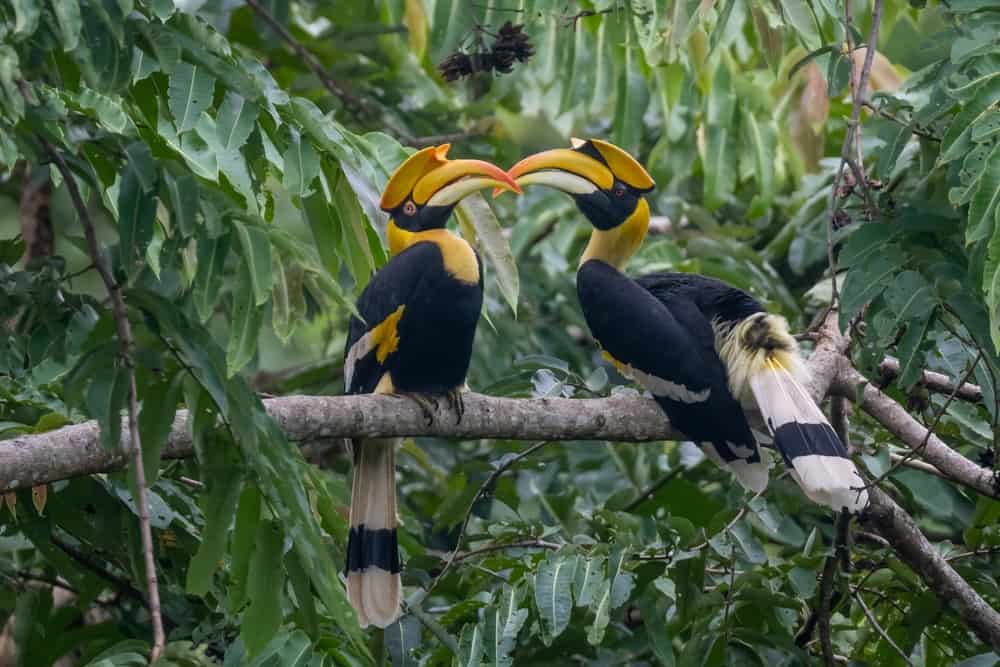
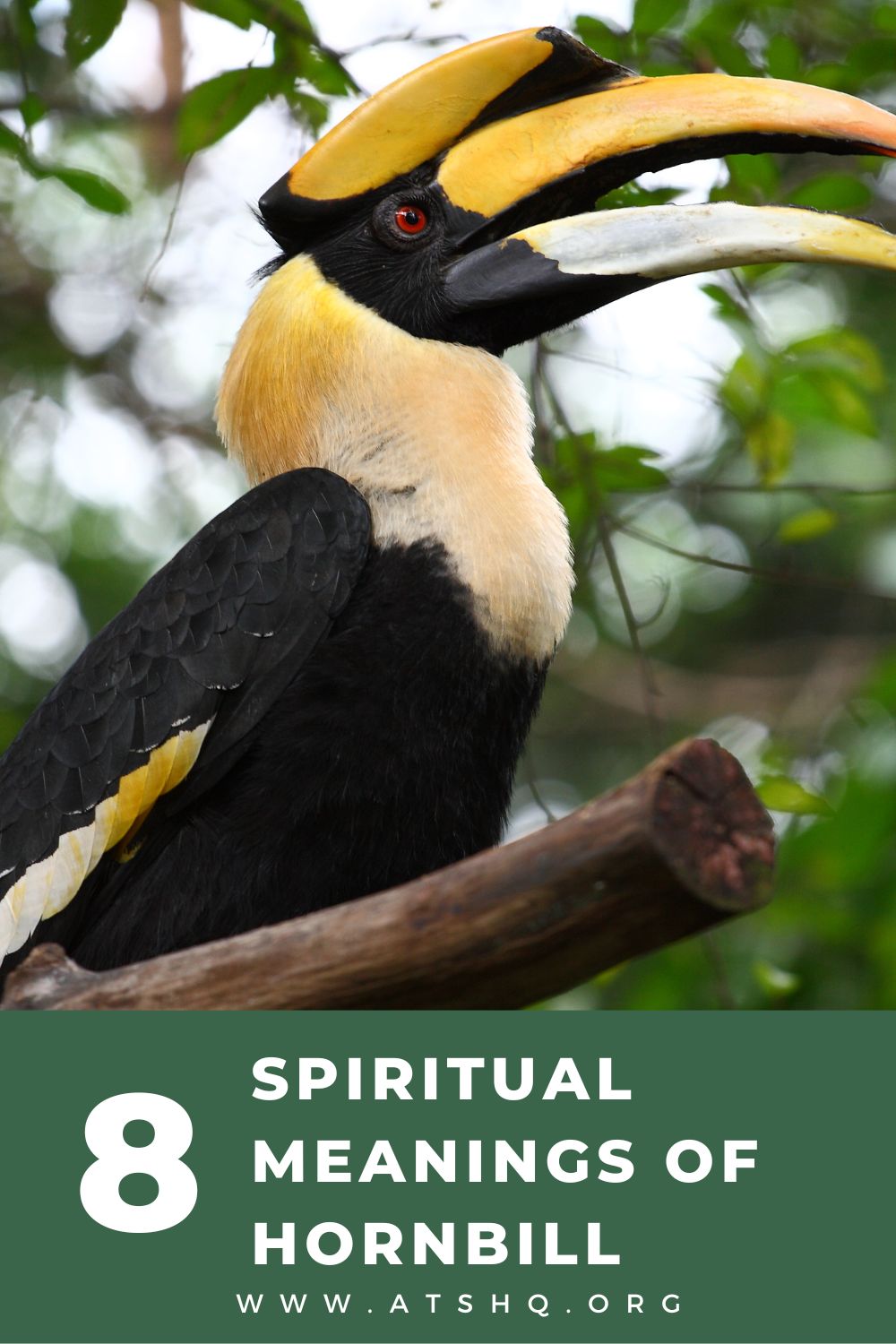
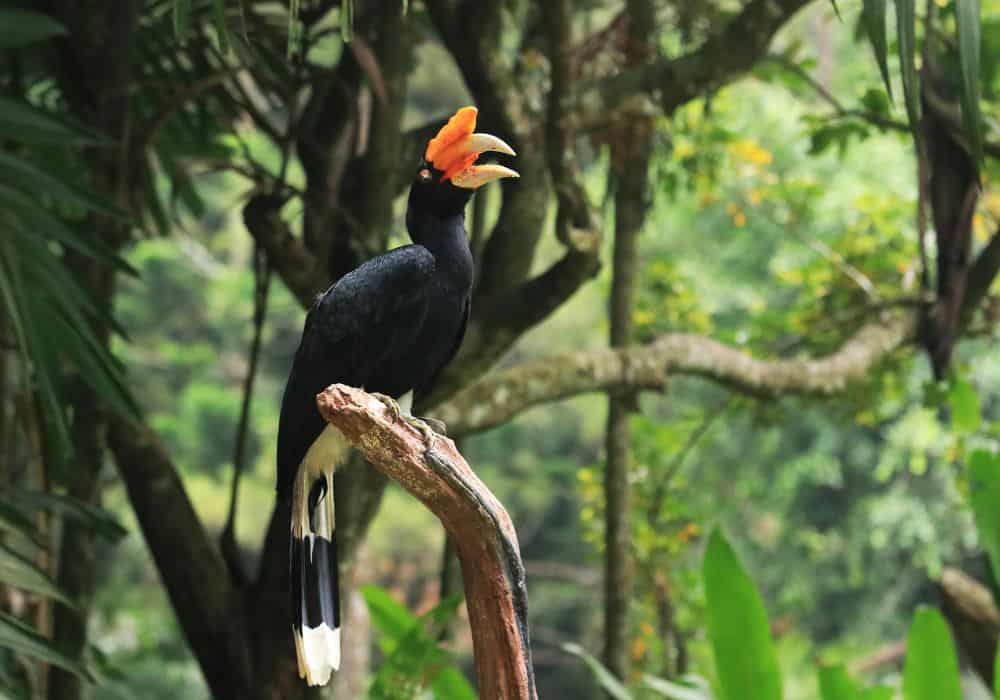
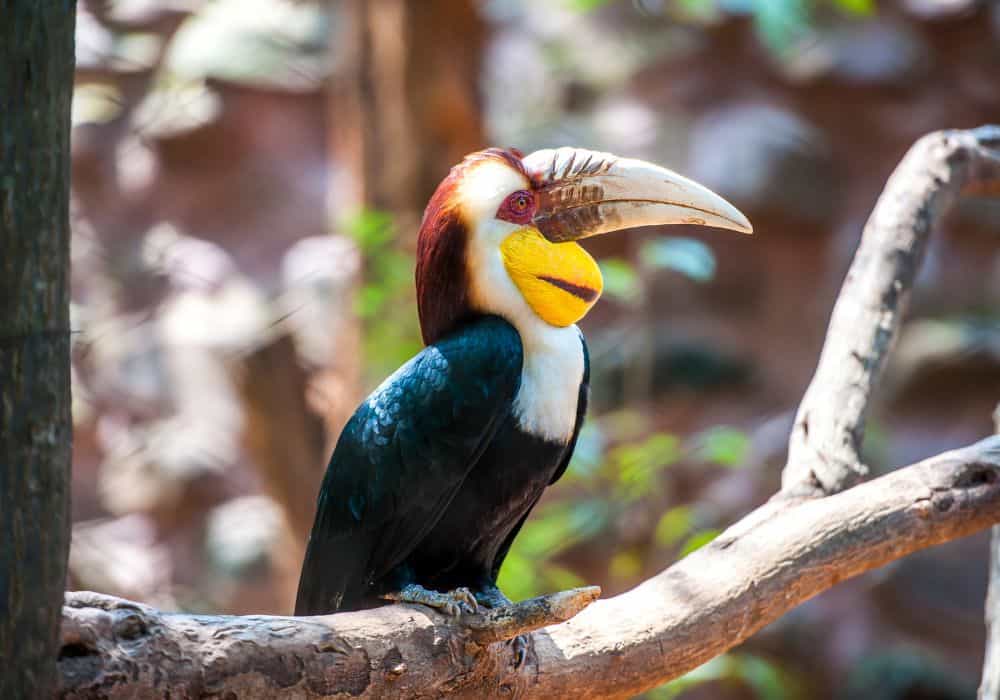
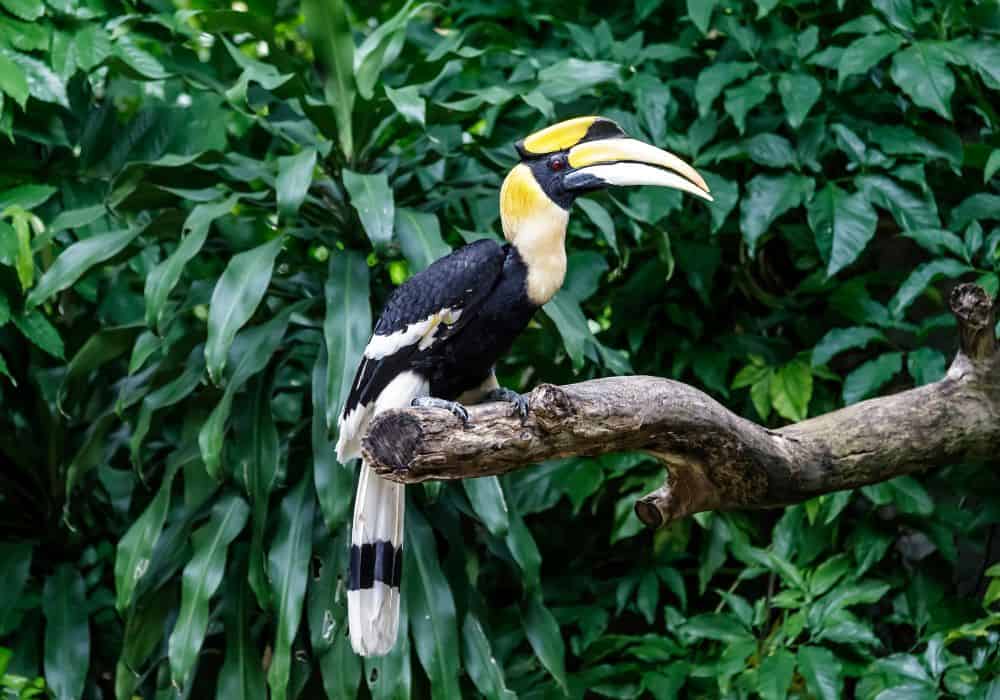
Very interesting, thanks. Am sitting watching wild Hornbills and found them so intriguing and found your article which backs up their near human traits. Fascinating….